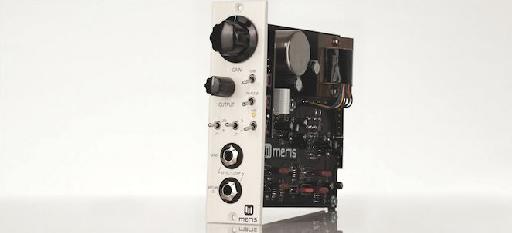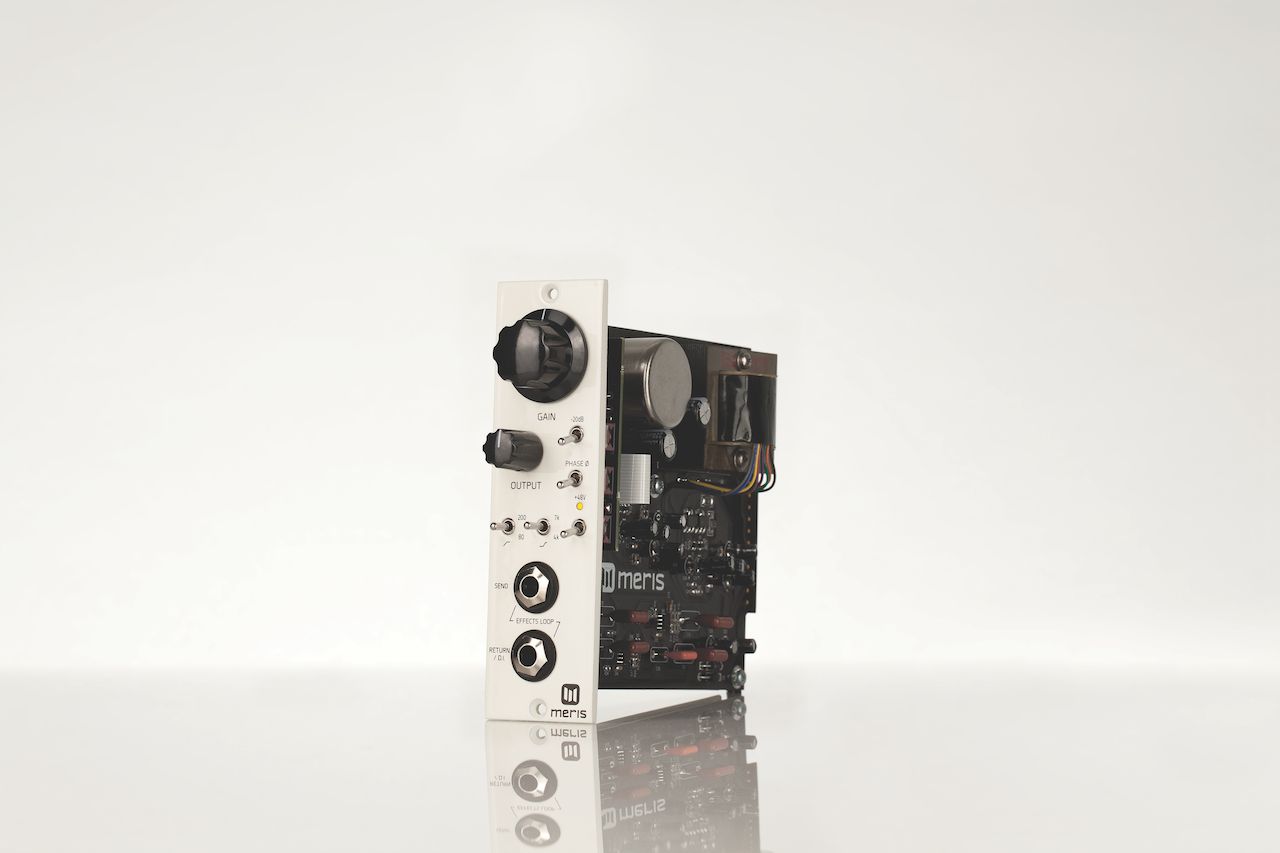The 500 series 'lunchbox' format is quickly gaining ground as the go-to way to construct a channel strip. Producers are able to take their 'sound' with them and create a customized audio path of preamps, EQ, compressors and the like. Meris is the latest to join the revolution with their 440 mic preamp. I road tested it on a variety of sources and was impressed by the sound.
The Build
The Meris 440 is well-built and fit into the 500 series chassis snugly.
The 440 is extremely well constructed. The knobs were tight and all of the switches felt rugged. The send and return jacks (which also double as a direct inject input—more on that later!) were also tight and free of any noise when I used them. In fact, one of the first things I noticed about the 440 is that the noise level is incredibly low. I was able to get a really clean signal in and out via the mic input as well as the D.I. input completely free of noise right from square one.
"One of the first things I noticed about the 440 is that the noise level is incredibly low."
On the front panel, you'll find standard pad and phase switches. There are separate gain and output controls, allowing you to dial in the amount of signal saturation while also keeping the output control inside the hybrid-discrete drive section of the transformer. There is a high-pass filter, as well as high-shelf filters that will help you quickly tame woofy guitar cabinets and add sparkle to your signal.
The effect pedal loop does double duty as a DI input for recording instruments directly. Although the 440 is designed primarily as a preamp for recording a guitar cabinet, the DI input works incredibly well for recording guitar direct, as well as bass.
Check out this 440 tips and tricks video from the good people at Meris:
The Sound
The 440 sports Cinemag transformers and uses many design elements from classic API gear. With their description sporting the words 'classic American mic pre tone' it's fairly clear what sound they're trying to help us achieve here. The 440 is primarily designed to help you get great guitar tones right out of the box, although there are a lot of versatile features that make it great for other sources.
"The 440 is primarily designed to help you get great guitar tones right out of the box, although there are a lot of versatile features that make it great for other sources."
I started by recording my Mesa Boogie Express 50 with the high-pass filter at the 80 Hz setting, as my Mesa does tend to lean to the 'woofy' side when I mic it up. I was pleasantly surprised with the sound and definitely agree with Meris that this preamp will save time 'dialing in' your guitar sound. It sounds clear and crisp right from the start, requiring little to no EQ.
The Meris 440 handled my driven Mesa Boogie Express 50 like a champ:
I then moved on to adding in a bass track using the DI input. At this point, I needed to use a little faith. I found that I had to turn the gain up all the way in order to get a good signal—but there was no noise and the bass sounded defined and clear. It's a bit like recording with an RE20 mic. You really have to give it a lot of gain, it's a bit uncomfortable to turn it up that high, but just close your eyes and trust the sound. The Meris really is well-designed, and even at high volume levels the noise just isn't there. I quickly added in an acoustic guitar track just for fun and although I don't consider my Taylor to be boomy, I engaged the 200 Hz switch to see if it could save me some EQ time.
"The Meris really is well-designed, and even at high volume levels the noise just isn't there."
I tried the 440 out on Bass through the DI, as well as acoustic and clean electric tones:
Conclusion
I really enjoyed my time with the Meris 440. If you're creating a custom 500 series channel strip for recording guitar, you really can't go wrong here. It's priced well and would be a great addition to any studio.
Price: $549 USD Pros: Well built, great design, filters and shelf EQ are quite usable and do what they should, great price. Cons: Using the DI required a lot of gain, but was still noise-free so it really wasn't a problem. |




 © 2024 Ask.Audio
A NonLinear Educating Company
© 2024 Ask.Audio
A NonLinear Educating Company
Discussion
Want to join the discussion?
Create an account or login to get started!